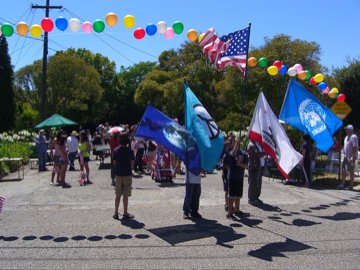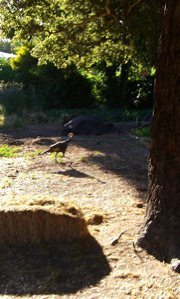Recuperating from a dental procedure provides a swell excuse for continuing my online reading into the history of dental practices. Teeth are a big deal for us humans, and even more so for us vain and image-conscious moderns, so there’s no shortage of interesting material to sift through. My favorite bits today:
–This piece of 1815 advice regarding what we call flossing: “A waxed thread passed between the teeth after every meal will save more teeth from decay than all the brushes and powders that can be used….” That’s from Levi Spear Parmly, a prominent American dentist also notable for being an early advocate of the theory that some sort of acidic substance resulting from the presence of old food particles was responsible for cavities. Despite Parmly’s insight, it took another 80 years after he introduced his waxed-string idea for the stuff to become a commercial product.
–Not strictly tooth-related at all: A short article from Scotland’s wonderfully entertaining (and perhaps defunct) History of Dentistry Research Group Newsletter. Last fall’s number included a short write-up on a piece of early 15th century surgery involving Prince Hal, the ne’er-do-well/king in waiting depicted in Shakespeare’s “Henry IV” (parts I and II) and “Henry V.”
To go back to the early 15th century: In the climactic battle between the prince’s father, Henry IV (viewed by many as a usurper), and his northern enemies, the prince opened the visor of his helmet at an inopportune moment and was struck in the face with an arrow. Problem: The arrow sank so deeply into the skull structure to the left of the prince’s nose that it couldn’t be freed and removed. Enter John Bradmore, surgeon and handyman extraordinaire:
“The aforesaid noble prince was cured by me … at the castle of Kenilworth — I give enormous thanks to God – in the following manner. Various experienced doctors came to this castle, saying that they wished to remove the arrowhead with potions and other cures, but they were unable to. Finally I came to him. First, I made small probes from the pith of an elder, well dried and well stitched in purified linen [made to] the length of the wound. These probes were infused with rose honey. And after that, I made larger and longer probes, and so I continued to always enlarge these probes until I had the width and depth of the wound as I wished it. And after the wound was as enlarged and deep enough so that, by my reckoning, the probes reached the bottom of the wound, I prepared anew some little tongs, small and hollow, and with the width of an arrow. A screw ran through the middle of the tongs, whose ends were well rounded both on the inside and outside, and even the end of the screw, which was entered into the middle, was well rounded overall in the way of a screw, so that it should grip better and more strongly. This is its form [See Fig 2. and note]. I put these tongs in at an angle in the same way as the arrow had first entered, then placed the screw in the centre and finally the tongs entered the socket of the arrowhead. Then, by moving it to and fro, little by little (with the help of God) I extracted the arrowhead. Many gentlemen and servants of the aforesaid prince were standing by and all gave thanks to God. And then I cleansed the wound with a syringe [squirtillo] full of white wine and then placed in new probes, made of wads of flax soaked in a cleansing ointment.
Squirtillo? Have to find a place to use that word.
If you’re wondering what Bradmore’s implement looked like, Hector Cole, a modern English arrowsmith, created a reproduction based on the doctor’s own description and drawing. Again, you wonder at the patient’s fortitude. On the other hand, after two weeks with an arrowhead stuck in your skull, maybe you’d be willing to try just about anything.
Like this:
Like Loading...




